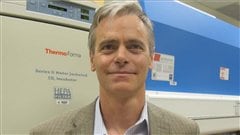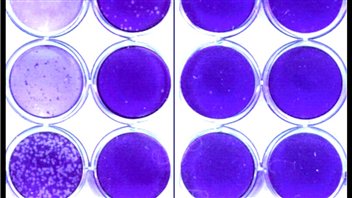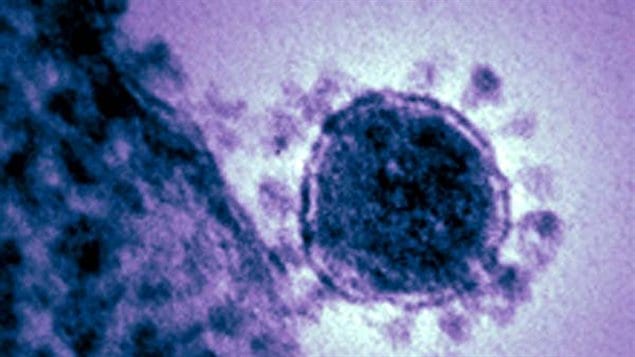In the western Canadian city of Edmonton, a recent research effort at the University of Alberta, in collaboration with other researchers at McMaster University in Hamilton Ontario, and in Russia, may lead to new ways to combat viruses.

In their effort to test reaction of viruses to molecules of drugs, the research by Luis Schang and his team in the Faculty of Dentistry and Medicine, including Dr. Mireille St Vincent and Ms. Che C Colpitts, discovered a new pathway and have created an entirely new way of attacking viruses.
For a virus to infect a cell, the virus has to change from a spherical shape to an hourglass shape. The new drug developed by Dr Schang and his team inserts itself into the virus and prevents it from changing to the necessary shape to fuse itself to a cell.
ListenWhile researchers had known for many years about the need for viruses to change shape to fuse to cells, no-one had previously looked into the bio-physics aspect of fighting viruses.
Traditionally, research and anti-viral drugs have focused on targetting the proteins and enzyme activity of viruses. By targeting the enzymic activity, the anti-viral drugs attempt to interrupt the replication of the virus.
Dr Schang and fellow researchers approached the issue from the biophysics aspect and by targeting lipids.

They began by testing synthetic copies of portions of known natural anti-viral lipids.
They first discovered that the synthetic structure had similar effects on the virus as did natural lipid molecules. Then they found that certain molecules inhibited the virus from being able to change its own structure to the correct shape needed to fuse to a cell. Without the ability to change to the correct shape, no infection can occur.
“The compounds or drugs we developed insert themselves inside a certain part of the virus and then the virus no longer has enough energy to change its shape and fuse to cells. When a virus fuses to a cell, this allows the virus to enter the cell and infect it,” explains Dr Schang. “So our discovery prevents the virus from infecting new cells, although it does not stop the virus from killing already infected cells.”
There are two general types of virus structure, one with no outside membrane, and one with. So far, the research deals with the types of virus that have an outside membrane such as the herpes virus, influenza, SARS, hepatitis B and C, West Nile and Corona virus amongst others.
Dr Schang says, “No one had considered looking at this area, at lipids, as drug targets before. And no one had considered biophysics important for antiviral drug design and development. The target is new, and the way we designed the drug is totally different and new
With this new pathway to attack viruses and the ability to synthetically replicate the drug, the team is continuing tests on lab models and also working on pre-clinical development with Pro-Physis, a bio-tech startup spun off from the University of Alberta.







For reasons beyond our control, and for an undetermined period of time, our comment section is now closed. However, our social networks remain open to your contributions.